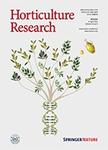Cannabis sativa: origin and history, glandular trichome development, and cannabinoid biosynthesis
作者机构:Key Laboratory of Saline-alkali Vegetation Ecology Restoration(Northeast Forestry University)Ministry of EducationHarbin 150040China College of Life ScienceNortheast Forestry UniversityHarbin 150040China Key Laboratory of Beijing for Identification and Safety Evaluation of Chinese MedicineInstitute of Chinese Materia MedicaChina Academy of Chinese Medical SciencesBeijing 100700China Institute of HerbgenomicsChengdu University of Traditional Chinese MedicineChengdu 611137China
出 版 物:《Horticulture Research》 (园艺研究(英文))
年 卷 期:2023年第10卷第9期
页 面:306-320页
核心收录:
基 金:supported by the National Natural Science Foundation of China(82204579) the Fundamental Research Funds for the Central Universities(2572022DX06) the Scientific and Technological Innovation Project of China Academy of Chinese Medical Science(CI2021A04113) Heilongjiang Touyan Innovation Team Program(Tree Genetics and Breeding Innovation Team)
主 题:comprehensive versatile globally
摘 要:Is Cannabis a boon or bane?Cannabis sativa has long been a versatile crop for fiber extraction(industrial hemp),traditional Chinese medicine(hemp seeds),and recreational drugs(marijuana).Cannabis faced global prohibition in the twentieth century because of the psychoactive properties of △^(9)-tetrahydrocannabinol;however,recently,the perspective has changed with the recognition of additional therapeutic values,particularly the pharmacological potential of cannabidiol.A comprehensive understanding of the underlying mechanism of cannabinoid biosynthesis is necessary to cultivate and promote globally the medicinal application of Cannabis ***,we comprehensively review the historical usage of Cannabis,biosynthesis of trichome-specific cannabinoids,regulatory network of trichome development,and synthetic biology of *** review provides valuable insights into the efficient biosynthesis and green production of cannabinoids,and the development and utilization of novel Cannabis varieties.



